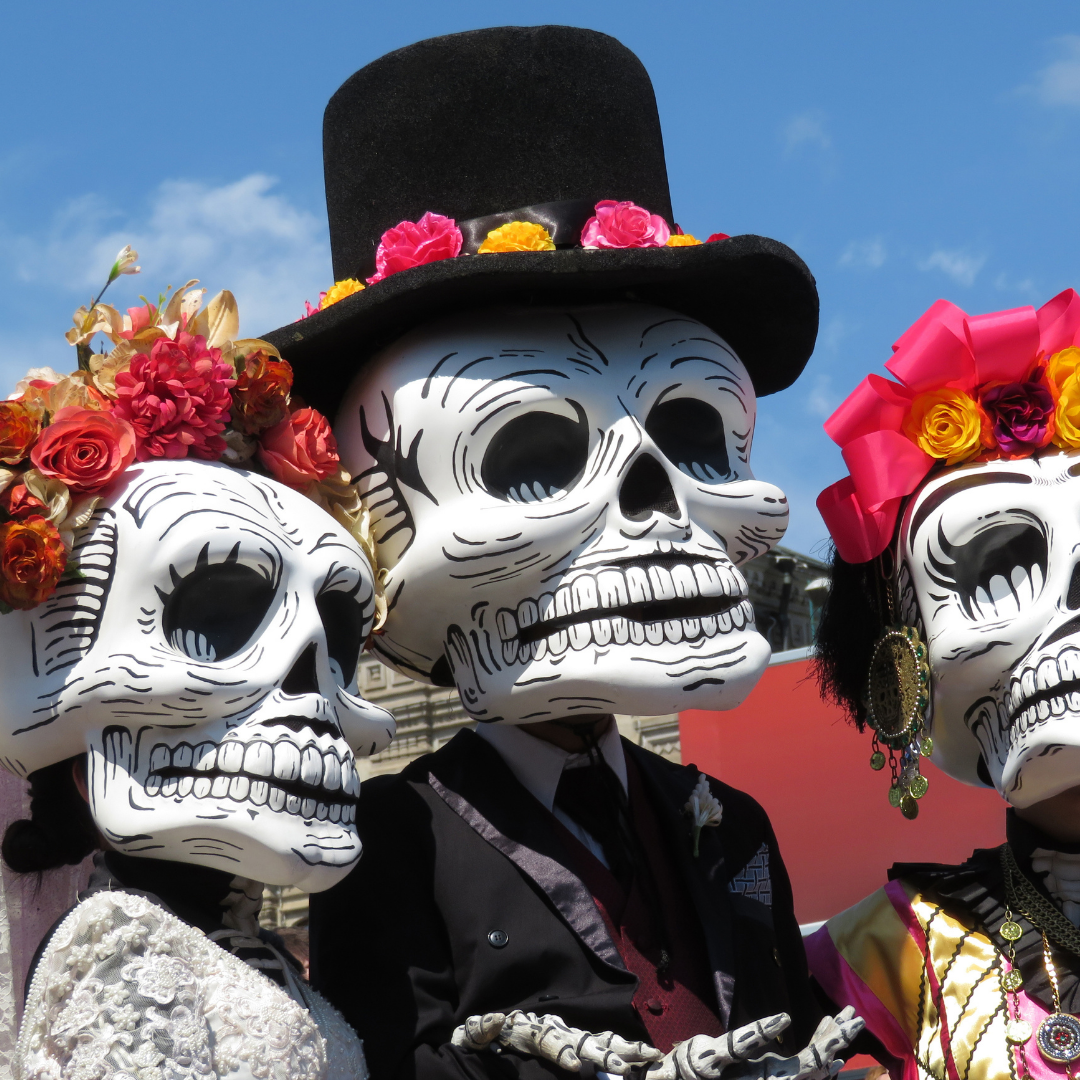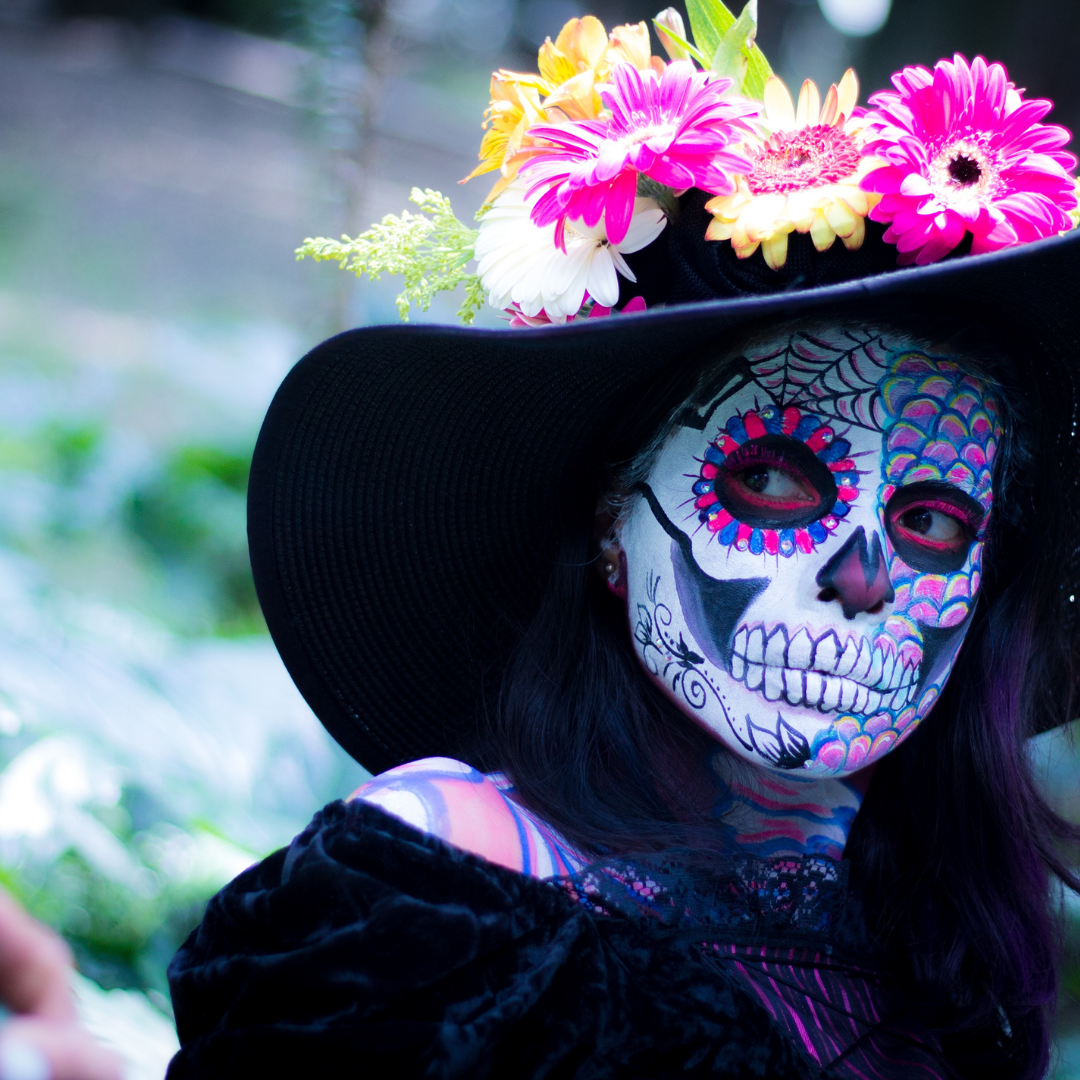Day of the Dead, otherwise known as Día de los Muertos, is rather deceptively not a one-day, but a multi-day holiday celebrated annually in Mexico on the first two days of November. Principally a celebration of both life and death in which families commemorate their deceased loved ones, it finds its roots in Mesoamerican culture, although its popularity nowadays is widespread. Unsurprisingly, there are more than a few traditions and customs associated with this event.
Here’s one thing we know: Día de los Muertos, or Day of the Dead, is NOT a Mexican version of Halloween.
Though related, the two annual events differ greatly in traditions and tone. Whereas Halloween is a dark night of terror and mischief, Day of the Dead festivities unfold over two days in an explosion of color and life-affirming joy. Sure, the theme is death, but the point is to demonstrate love and respect for deceased family members. In towns and cities throughout Mexico, revelers don funky makeup and costumes, hold parades and parties, sing, and dance, and make offerings to lost loved ones.
Here are ten facts you must know about Día de los Muertos:

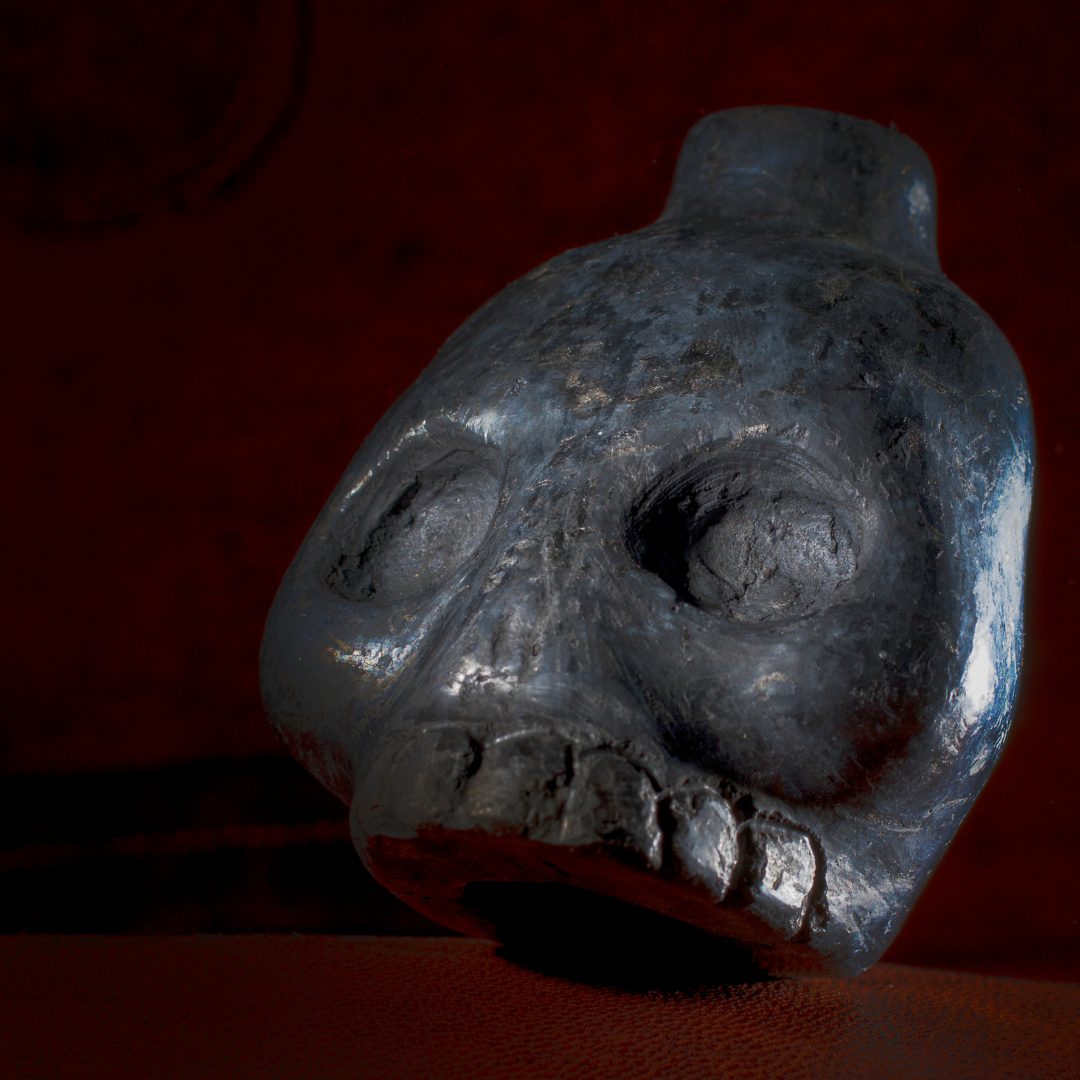
RECOGNITION BY UNESCO
Thanks to efforts by the United Nations Educational, Scientific and Cultural Organization, or UNESCO, the term “cultural heritage” is not limited to monuments and collections of objects. It also includes living expressions of culture—traditions—passed down from generation to generation. In 2008, UNESCO recognized the importance of Día de los Muertos by adding the holiday to its list of Intangible Cultural Heritage of Humanity. Today Mexicans from all religious and ethnic backgrounds celebrate Día de los Muertos, but at its core, the holiday is a reaffirmation of indigenous life.
HISTORY
Day of the Dead originated several thousand years ago with the Aztec, Toltec, and other Nahua people, who considered mourning the dead disrespectful. For these pre-Hispanic cultures, death was a natural phase in life’s long continuum. The dead were still members of the community, kept alive in memory and spirit—and during Día de los Muertos, they temporarily returned to Earth. Today’s Día de los Muertos celebration is a mash-up of pre-Hispanic religious rites and Christian feasts. It takes place on November 1 and 2—All Saints’ Day and All Souls’ Day on the Catholic calendar—around the time of the fall maize harvest.
HOLDING GRAVESIDE VIGILS
Although many opt to stay at home on the night of November 1 and the early hours of November 2, holding graveside vigils is still common in many Mexican communities and is most definitely one of this celebration’s most iconic rituals. One area in which this trend still thrives is Pátzcuaro, Michoacán; on November 2, residents (along with throngs of curious tourists) take boats colloquially known as mariposas (butterflies) to Isla de Janitzio, where they honor their dead in the island’s cemeteries.
GRAVE CLEANING AND DECORATING
Even though not all families choose to honor their loved ones at the graveyard itself, the tradition of cleaning the grave is still respected by most. This task usually includes tidying the area surrounding the headstone but being sure to leave behind the aforementioned cempasúchil flowers. A complete altar is often constructed there, too. Graveyards during the Day of the Dead celebrations, contrary to what you might expect, actually take on the atmosphere of (surprisingly festive) social gatherings.
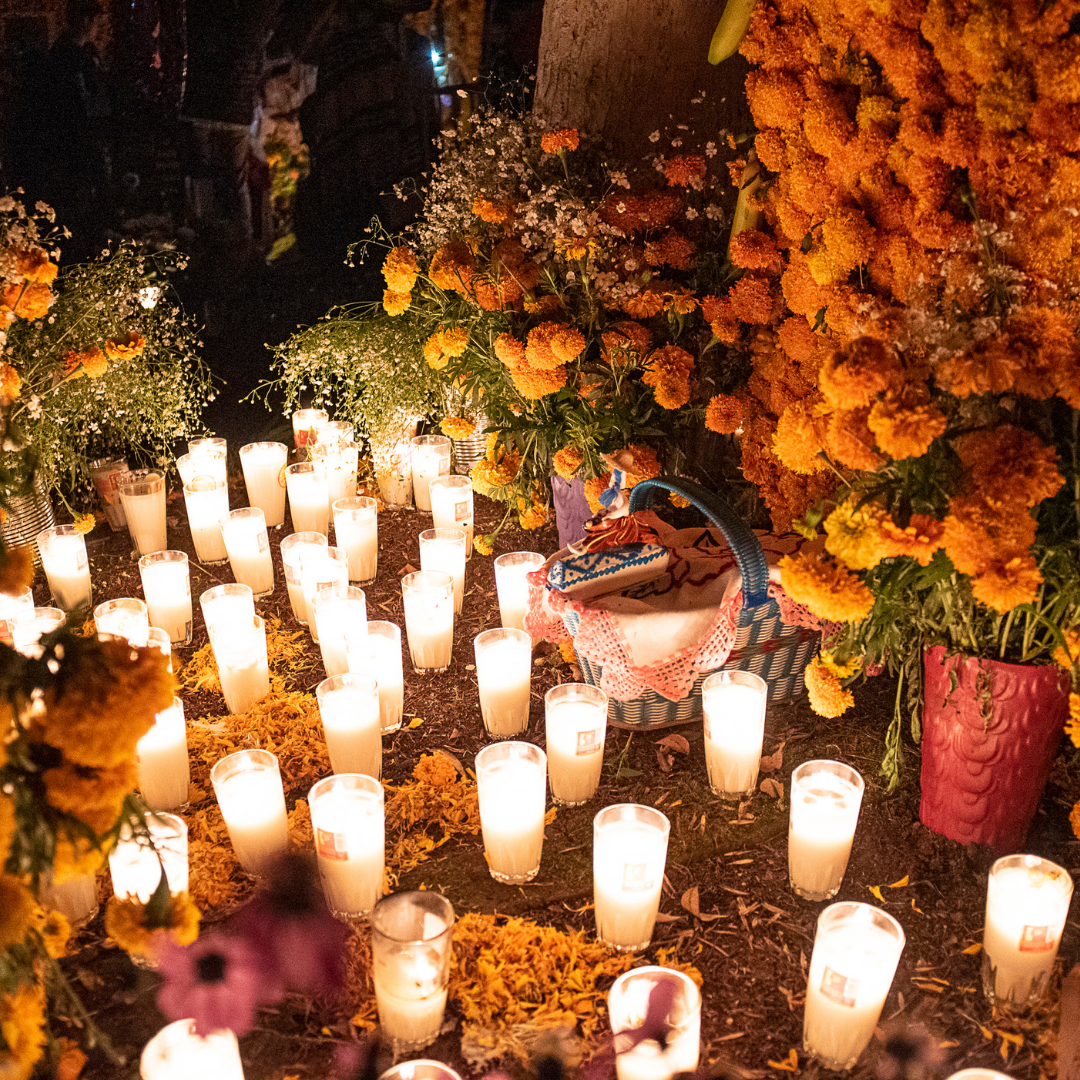
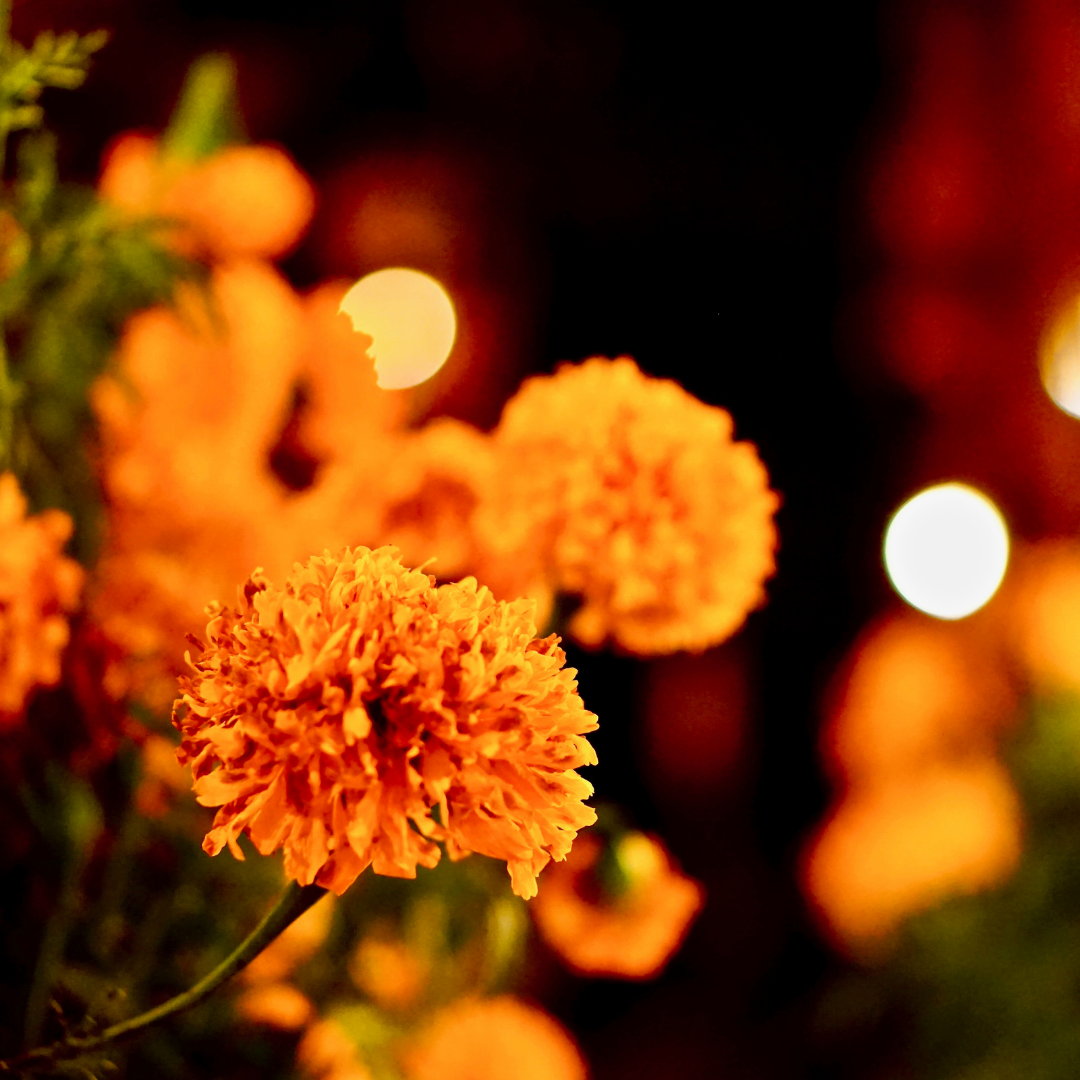
ALTARS
The centerpiece of the celebration is an altar, or ofrenda, built in private homes and cemeteries. These aren’t altars for worshipping; rather, they’re meant to welcome spirits back to the realm of the living. As such, they’re loaded with offerings—water to quench thirst after the long journey, food, family photos, and a candle for each dead relative. If one of the spirits is a child, you might find small toys on the altar. Marigolds are the main flowers used to decorate the altar. Scattered from altar to gravesite, marigold petals guide wandering souls back to their place of rest. The smoke from copal incense, made from tree resin, transmits praise and prayers, and purifies the area around the altar.
CREATION OR PURCHASE OF SUGAR SKULLS
The term ‘sugar skull’ actually comes from Day of the Dead festivities and is perhaps the most globally emblematic symbol of both the festivities and Mexico in general. Sugar skulls are either bought or made by families to add to their altar, and the name of the deceased is often written in icing on the forehead. In addition to the traditional sugar versions, you can also get chocolate and biscuit ‘sugar skulls’ during this period.
EATING PAN DE MUERTO
Another common tradition during the Day of the Dead period is the consumption of the so-called pan de muerto. Thankfully, this is not bread made of dead people, no matter what the name might lead you to think. It’s actually lightly orange-flavored sweet bread, which has ‘bonelike’ decorations atop it and a healthy coating of sugar.
LITERARY CALAVERAS
Calavera means “skull.” But during the late 18th and early 19th centuries, calavera was used to describe short, humorous poems, which were often sarcastic tombstone epitaphs published in newspapers that poked fun at the living. These literary calaveras eventually became a popular part of Día de los Muertos celebrations. Today the practice is alive and well. You’ll find these clever, biting poems in print, read aloud, and broadcast on television and radio programs.

COSTUMES
Day of the Dead is an extremely social holiday that spills into streets and public squares at all hours of the day and night. Dressing up as skeletons is part of the fun. People of all ages have their faces artfully painted to resemble skulls, and, mimicking the calavera Catrina, they don suits and fancy dresses. Many revelers wear shells or other noisemakers to ramp up the excitement—and also possibly to rouse the dead and keep them close during the fun.
TAKING PART IN THE CATRINA PARADE
Even though this custom more or less only applies to Mexico City—although other locations will probably hold their own, albeit less grand, version—it is worth a mention. Each year, hundreds of people dress up as Catrinas and descend on the zócalo to take part in the Catrina parade. Attendees paint their faces in the typical style of the Catrina skull, complete with colorful accents around the eyes and cheeks, and dress in outfits appropriate for the occasion.
Countless communities in Mexico celebrate Day of the Dead, but styles and customs differ by region, depending on the region’s predominant pre-Hispanic culture.
SOURCES:
https://www.nationalgeographic.com/travel/article/top-ten-day-of-dead-mexico
